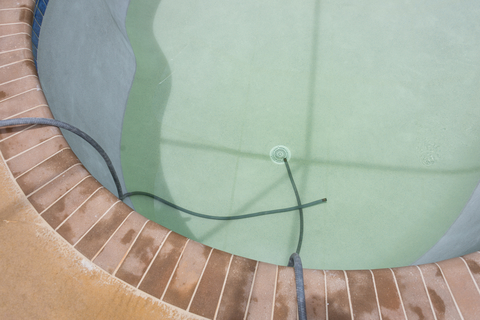Professional Watershaping
‘Perception is reality,’ observed Brian Van Bower at the head of his Aqua Culture column for August 2003. ‘Regardless of whether that’s right or wrong, you are judged by appearances.’ ‘If your own appearances mean ugly-looking vehicles, sloppy-looking employees, shabby offices and job sites that look like disaster areas, you will inevitably be judged with that image by the clients who have hired you and by anyone else exposed to
‘Although my business now focuses on design and consulting,’ declared Brian Van Bower near the top of his Aqua Culture column of June 2003, ‘I spent enough years as a contractor to be able to evaluate what goes on between contractor and clients.’ ‘In fact,’ he added, ‘in my role as designer, clients often turn to me with comments about their contractors – and they’re not shy about complaining or in telling me about what makes them happy. And it works the other way, too, because contractors, knowing that I have experience as a contractor myself, will often turn to me as someone who can
No matter the method by which it is applied, concrete is a fascinating material. The history books tell us that it's been in use for thousands of years - as far back as 6500 BC, when it was used by Bedouins to make cisterns in which they collected and kept water underground in desert climates. The ancient Greeks used concrete, too, as did the Assyrians and especially
‘I take a lot of pictures of my work – so many, in fact, that friends and colleagues often tease me about it.’ That’s how David Tisherman opened his Details column of June 2003, broaching a subject near and dear to his heart. ‘[W]hat may seem like an obsession to others seems like good, commonsense business practice to me. In fact,’ he continued, ‘I believe that every single designer and builder involved in the creation of quality watershapes should record his or her work photographically – and should make a point of doing so in a way that
‘During a presentation to a recent conference for the swimming pool and spa industry, I tossed this nugget to the audience: “By a show of hands, how many of you in this room believe that most people think highly of our industry? Please be honest.” ’ That’s how Brian Van Bower began his Aqua Culture column in the May 2003 edition of WaterShapes. He continued: ‘It was a mixed group of more than 160 people representing
‘It’s an unfortunate fact that landscape architects receive little or no formal education in watershaping while they’re in school. As a result,’ began Mark Holden in his Currents column for the April 2008 issue of WaterShapes, ‘where the typical landscape architect’s irrigation plan will show every pipe, fitting, wire and component for a given project, that same project’s pool plan will carry almost no
‘Why is it that, on the pool/spa side of the watershaping business, it’s so difficult to find much by way of truly workable plans and specifications?’ That’s how Brian Van Bower started his Aqua Culture column in the April 2003 edition of WaterShapes before adding: ‘In residential work, of course, the tone is set by local building inspectors and plan checkers, whose needs seem to vary tremendously from place to place. But that’s no excuse for the fact that the plans used in a great many residential projects are grossly
‘Many great artists are best known for working in identifiable genres, styles or modes or with specific materials, themes or some other defining detail. From Picasso’s cubist abstractions to Mozart’s cascading melodies or Rodin’s bronzes to Frank Gehry’s sweeping architectural forms, geniuses of all stripes are in one way or another known for qualities that are
‘As you spend your days creating structures that contain and control water,’ wrote Brian Van Bower to open his January 2003 Aqua Culture column, ‘it’s easy to lose sight of the water itself. Yes, we’re conscious of the fact that we have to filter, treat and sometimes heat it, but in its role as the defining feature in our products, water is so familiar a participant that in some ways it almost becomes invisible.’ ‘I’d like to heighten our general awareness by
Taking control of the plastering process is within reach of any quality-oriented designer or builder, declares Kim Skinner. To help you on your way, he offers this step-by-step guide to managing what should happen on site before, during and after plaster application takes place.
















